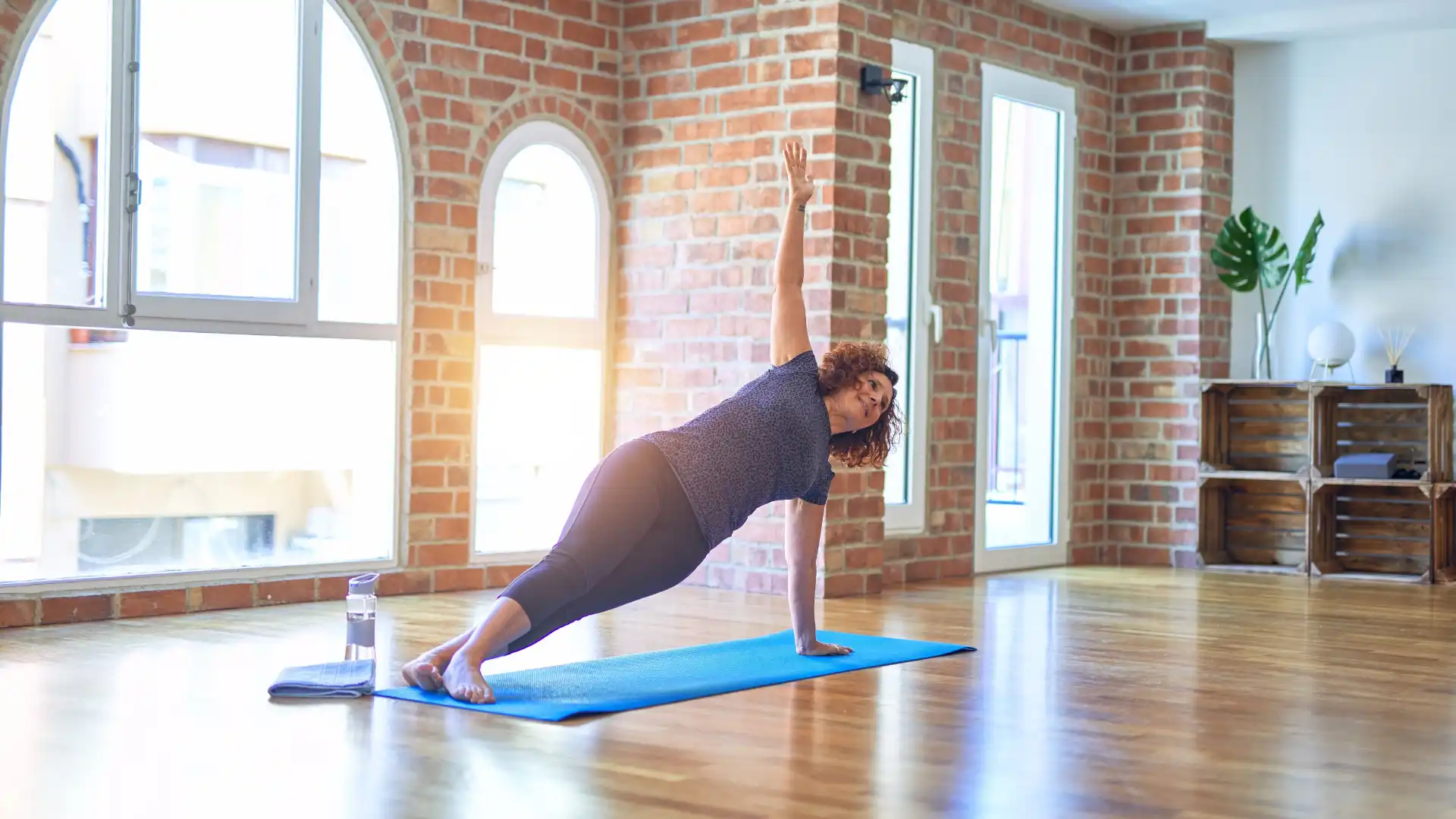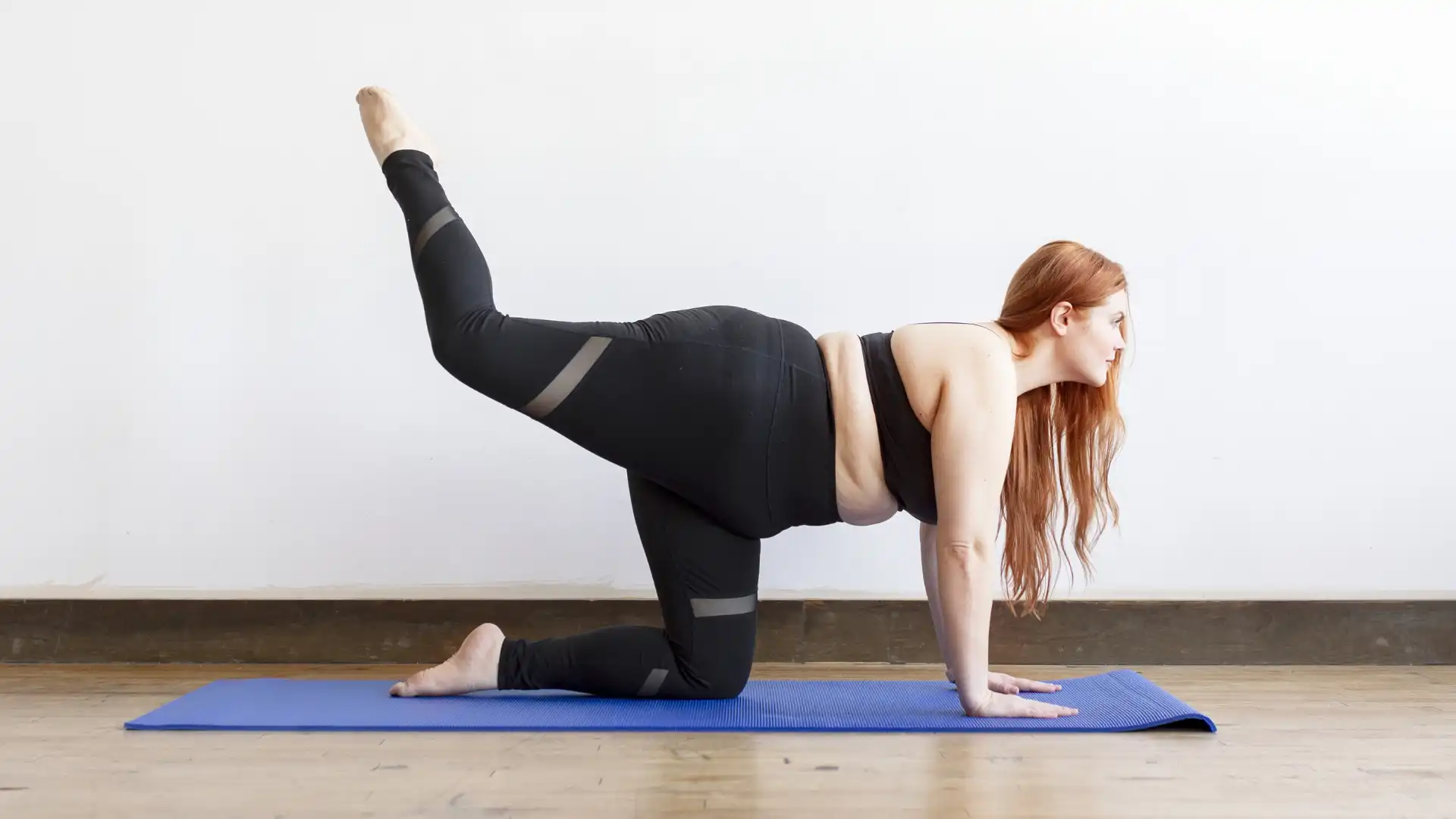Thinking of Beginning Yoga? Here Are Some Tips to Get You Started

While yoga can provide relaxation and many other benefits, coming to a class at a yoga studio can be stressful and intimidating, especially if you have never been to one before.
You may be unsure about quite a few things, such as what you should wear and bring, whether you should keep your socks on, and what you should do with your phone.
Worry not! Below are a few tips to help you come to your first yoga class without any extra worries or concerns.
Yoga Practice Tips: Class Etiquette Don’ts
1. Arrive Late
Yoga instructors plan their classes before teaching. They integrate warm-up poses to make sure that you go into the more advanced poses prepared. Doing so otherwise can result in injury.
Arriving in a rush can cause your stress levels to go up and not enjoy your practice as much as you could. Try to come on the early side so that you have enough time to change, wind down, roll out your mat, and fetch any props that you may need.
If you absolutely can’t help being late, make sure to come in and quietly settle so that you cause as little distraction as possible.
2. Skip Savasana
For busy yogis, it may seem that skipping Savasana is a great way to save a bit of time and avoid the crowds on the way out of the studio. It also may seem like a waste of time to simply lie and do nothing.
Nonetheless, Savasana can be extremely beneficial. Many find it really hard to remain still. Savasana is a wonderful way to allow our bodies and minds to completely relax before getting back to our everyday life. It can also be an excellent start for establishing a meditation practice.
3. Practice on a Full Stomach
Avoid practicing on a full stomach. It’s best to do yoga about 2-3 hours after a big meal. This way, you will have enough energy and won’t be feeling sick or lethargic.
However, you shouldn’t come starving either. If you haven’t had anything to eat for a long time, don’t hesitate to grab a small snack such as some fruit, a smoothie, or a handful of nuts.
4. Bring Your Phone
Using a phone during a yoga class is not only disrespectful toward your teacher and other students, but also incredibly distracting. To fully enjoy the class and give yourself some time to unplug, put your cell phone in silent mode or turn it off altogether and leave it in your locker.
5. Talk to Your Neighbor
Similarly to using a phone, talking in class can be distracting and disrespectful. If there’s something that you’d like to speak about with other practitioners, it’s best to do so after the class. Hey, you can even grab a drink together and make new friends!
If there is something you’d like to clarify or ask your yoga instructor, raise your hand, or otherwise attract their attention. Speak quietly so that you do not distract others.
6. Judge Yourself or Others
No two people are the same. Everyone’s life experiences, struggles, and yoga journeys are different. What we see in others is our own perception and interpretation, and it will be different from theirs.
Yoga is a judgment-free discipline. Therefore, don’t focus on what others are wearing or how they are performing the poses, but most important, avoid judging yourself. Even if you fall out of a pose or do something embarrassing such as accidentally fart in class, keep in mind that we all start somewhere and we all have done something embarrassing. You’re always going to judge yourself more harshly than anyone else will.

7. Compare Yourself to Others
Everyone’s body, yoga experience, and situation are unique. So, it’s absolutely normal that some students are stronger, more flexible, thinner, or more fashionable than you—or the other way around.
Instead of focusing on others, focus on your own practice. Appreciate the hard work you are doing and celebrate the progress you’re making, regardless of how big or small it is.
8. Bring Your Own Yoga Mat or Towel
Studios tend to have mats and other props that you can borrow or rent for a symbolic price. However, if you don’t feel comfortable using props that others have used and that may not have been properly cleaned, bring your own yoga mat or at least a yoga towel that you can use over one of the studio’s mats and simply wash afterward.
Yoga Class Basics: Your Should-Do List
1. Drink Plenty of Water Throughout the Day
If you have planned to go to a yoga class, make sure to sip water throughout the day. Avoid downing an entire bottle of water just before class because you will likely end up having a full bladder that is going to distract you.
Unless you are going to practice Bikram or Hot Yoga, it’s generally not recommended to drink throughout the class. In Bikram and Hot Yoga, however, you are going to practice in a heated room and lose lots of liquids. So, keep a bottle with you.
If it’s not a Bikram or Hot Yoga class, simply take a look at the other students. If they have bottles with them, then their instructor is probably okay with that.
2. Talk to Your Doctor About Yoga
In general, yoga is safe and beneficial as long as you practice mindfully. Nevertheless, if you are a beginner, you may have a hard time sensing the subtle cues of your body and knowing what to watch out for.
Moreover, many often believe that yoga is a cure-all and that it can’t harm you. Unfortunately, many practice yoga from the ego. It’s not uncommon for people to ignore the teacher’s safety instructions and how their bodies are feeling. Doing so causes them to practice through pain. As a result, despite the numerous benefits of consistent yoga practice, yoga-related injuries are on the rise. Therefore, it’s important to remain careful.
You should consult your doctor before you engage in any physical activity, and it is especially important if you have injuries or pre-existing health conditions.
3. Notify Your Yoga Instructor About Any Injuries or Health Conditions
If you have any health issues or injuries, it’s best to let your yoga teacher know. In addition to that, let your teacher know if you are pregnant.
Yoga instructors are responsible for providing modifications and correcting their students’ alignment. If they are unaware of your medical issues, there’s a possibility that they can unintentionally provide instructions that may cause you to hurt yourself.

4. Find Your Yoga Edge
As you start progressing in yoga, you’ll feel discomfort. Feeling muscle tension and discomfort is natural. However, you should be cautious of any sharp pain as well as any pain in or near the joints. If you feel that, slowly and gently back off.
To avoid injuries, you should challenge yourself so that you keep progressing, yet refrain from pushing or forcing. This sweet spot is your edge. It will likely take you some time to feel your edge. That’s absolutely normal. Due to hectic and demanding lifestyles, we ignore the needs of our bodies and gradually become disconnected from them. It takes a while to learn to reconnect with our bodies again.
5. Slow Down During Periods
Doing yoga during periods can help you ease pain and discomfort. However, don’t practice dynamic yoga only for the sake of habit. Be ready to take things easy and go to a slower-paced yoga class instead.
Traditionally, you should avoid inversions during periods and practice modifications, such as Viparita Karani (Legs-Up-The-Wall), lying flat on the floor instead of placing your hips on a bolster. Inverting during your period can stop the flow, resulting in cramps and subsequent “flooding” when the flow begins again. But, at the end of the day, it’s your practice. Do what feels right for you.
6. Dress Comfortably for Yoga Practice
Yep, I know. There’s a ton of beautiful yoga clothes out there. However, choose comfort over aesthetics. Make sure your clothing is comfortable, stretchy, breathable, doesn’t constrict your movement, or get in the way.
For slow-paced classes, loose and light clothing can be great. However, if you’re going to an active yoga class, such as Ashtanga or Vinyasa, a pair of leggings, a comfortable fitting top, and a supportive yoga bra will be best. This will ensure that you don’t get caught in your clothes, get distracted, or fall and hurt yourself. And you will also not need to tuck your clothes in as you do inversions.
It is also easier for yoga teachers to assess your alignment if you are wearing something form-fitting.
Pack a hoodie or a sweater to put on during Savasana if the weather is chilly.
7. Get Showered Before Yoga Class
According to yoga philosophy, we should practice saucha or cleanliness inside and out. If it’s possible, get a shower before you join a yoga class. It will not only freshen you up but also show respect to other students and the teacher. Body odor can be distracting.
8. Leave Your Shoes at the Door
Another way of practicing saucha is by taking your shoes off before you go into the yoga room. It’ll make sure that dirt or germs will not enter the yoga practice area.
Yoga is generally practiced barefoot. However, if you are cold, keep your socks on until the class starts or wear non-slip yogi socks.

9. Take a Break When You Need One
Yoga class is not a gym class. You don’t have to do everything perfectly or compete with anyone. Listen to your body and don’t be afraid to take a break and rest in Balasana (Child’s Pose) whenever you need to catch your breath and recenter. Feel free to remain in Child’s Pose as long as you need it.
10. Put Away the Props after the Yoga Class
If you are using any of the yoga studio’s props, don’t forget to put them away after the class. This way, you show respect to both your yoga teacher and the students who may practice after you.
Last but not least, don’t let your worries prevent you from enjoying your class! We’ve all been there!
 Karina Norton is a certified yoga instructor currently living and teaching in the south of Spain. She is passionate about anatomy and uses her background in weightlifting and dance to teach creative and safe classes. Karina primarily teaches a variety of mixed-level Vinyasa, Ashtanga, and Yin yoga classes and workshops, and particularly enjoys working with women during their prenatal and postnatal journey. She continuously learns about different aspects of yoga and blogs on her website yogabykarina.com.
Karina Norton is a certified yoga instructor currently living and teaching in the south of Spain. She is passionate about anatomy and uses her background in weightlifting and dance to teach creative and safe classes. Karina primarily teaches a variety of mixed-level Vinyasa, Ashtanga, and Yin yoga classes and workshops, and particularly enjoys working with women during their prenatal and postnatal journey. She continuously learns about different aspects of yoga and blogs on her website yogabykarina.com.



